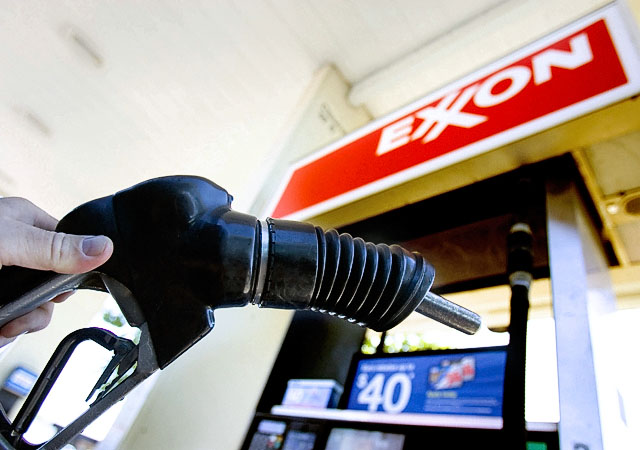This post may contain links from our sponsors and affiliates, and Flywheel Publishing may receive
compensation for actions taken through them.
 At a presentation to analysts today, Exxon Mobil Corp. (NYSE: XOM) said it plans to invest about $34 billion in “high-quality” projects in 2011, and that spending through 2015 would average between $33 billion and $37 billion annually. The company also expects production to increase by 3%-4% in 2011 and by an average of 4%-5% for the five-year period from 2009-2014.
At a presentation to analysts today, Exxon Mobil Corp. (NYSE: XOM) said it plans to invest about $34 billion in “high-quality” projects in 2011, and that spending through 2015 would average between $33 billion and $37 billion annually. The company also expects production to increase by 3%-4% in 2011 and by an average of 4%-5% for the five-year period from 2009-2014.
Chevron Corp. (NYSE: CVX) has already said that it would spend $26 billion in 2011 on capital projects, with $22.6 billion for upstream spending and $2.9 billion on refining and marketing. ConocoPhillips Corp. (NYSE: COP) plans to spend $13.5 billion on capital projects in 2011, with about $12 billion going to upstream projects. While these investments offer some insight into where the largest US oil and gas producers are going, the numbers also obscure some significant changes in the E&P business.
The most important change is in reserves replacement. Exxon boasted that it has replaced 209% of its 2010 production. The company added 3.5 billion barrels of oil equivalent, BOE, in 2010. Of that amount, 2.8 billion BOE resulted from its acquisition of XTO Energy and that company’s natural gas reserves. Exxon’s organic replacement amounted to a mere 700 million BOE, less than the 920 million BOE of organic replacement reported by Conoco. Chevron added just 240 million BOE in 2010, for a reserve replacement ratio of just 24%.
Energy companies now combine natural gas liquids, NGLs, and oil sands deposits with crude oil reserves in a category called simply “liquids.” Some of the NGLs can be refined into transportation fuel, but a lot can’t be. Oil sands reserves properly belong with liquids — before 2009 these were considered mining assets.
What NGLs add is cash flow. According to Exxon’s 2010 10-K, NGLs cost about $8.41/BOE to produce while the company sells the stuff for the same price as it sold its oil, $73.81/barrel. Natural gas sold for $5.00/thousand cubic feet. A barrel of oil has about six times the energy of a thousand cubic feet of gas, so an equivalent price for a gas-equivalent barrel would be about $30. The cash difference between $73.81 and $30 is what makes a liquids-rich natural gas play like the Eagle Ford so valuable.
Nothing is more important to big oil companies than reserves. Exxon boosted its reserves with its purchase of XTO. Chevron is spending a record amount in 2011 on cap-ex, with heavy commitments to liquefied natural gas projects in Australia, and Conoco is selling off what it deems non-core assets to build a war chest to focus on liquids. Chasing reserves means going into ultra-deepwater crude or natural gas and NGL production.
This is not your grandfather’s oil business.
Paul Ausick
Take This Retirement Quiz To Get Matched With An Advisor Now (Sponsored)
Are you ready for retirement? Planning for retirement can be overwhelming, that’s why it could be a good idea to speak to a fiduciary financial advisor about your goals today.
Start by taking this retirement quiz right here from SmartAsset that will match you with up to 3 financial advisors that serve your area and beyond in 5 minutes. Smart Asset is now matching over 50,000 people a month.
Click here now to get started.
Thank you for reading! Have some feedback for us?
Contact the 24/7 Wall St. editorial team.




